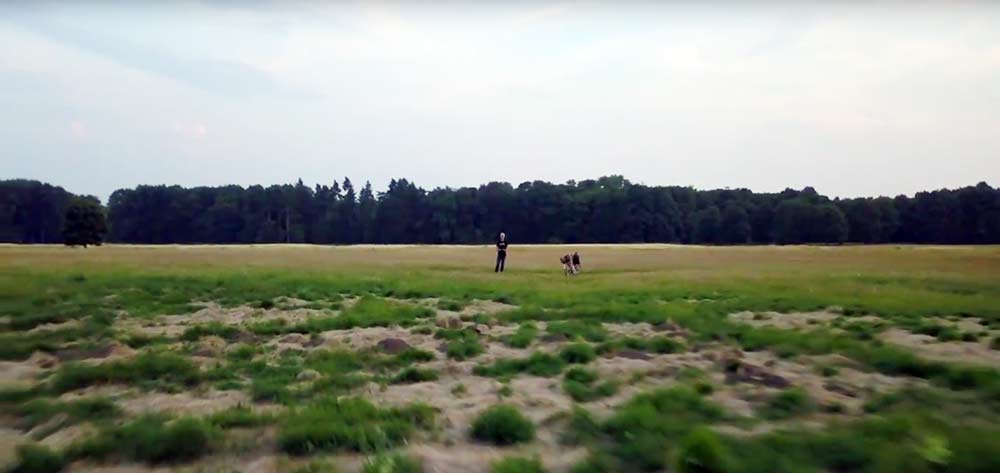[two-fifths-first]
it was my first flight of my mavic pro drone under very windy conditions. although i could film/photograph very stable footage as always, i learned a lesson.
[/two-fifths-first]
[three-fifths]
das war mein erster drohnenflug bei starkem wind. obwohl die kamera wie immer extrem stabile bilder ablieferte, lernte ich einiges dazu.
[/three-fifths]

speedy flight with lots of wind. photo: ms
[two-fifths-first]
the lesson i learned was that the image we see on the smartphone attached to the controller tells me only part of the true situation. watching the drone in the air i could see it struggle with the gusty wind. it was dancing like mad, and i could easily imagine that the mavic would tilt by 80 or 90 degrees and fall to the ground. because of that fear i flew it close to the grass – where the wind was still pretty wild. the drone was changing its altitude rapidly and randomly by plus/minus half a meter. you can see a nice → motion blur at the buttom of the screenshot above. the speed was around 30 km/h.
even more impact on me was watching the mavic fight against the wind at higher altitudes. there are several videos out there on youtube where we see drones flying easily out to the ocean – and never making it back. the “intelligent” battery invokes the return to home (RTH) procedure without knowing the wind direction. in my case last night i had enough battery power, plus i was not flying further away than to the woods in the background. but i could see how the aircraft sped up to the trees and how slowly it came back. there were moments when the wind actually carried the drone towards the woods, although my joystick demanded to come back.
since that experience i’m much more aware of the drone’s power. in calm air it seems to fly fast and easy. with some wind it can easily become a victim to the wind. the new DJI drone “spark” is half of the mavic’s weight. yesterday i thought, a 4 kilo drone would fight the wind with ease.
[/two-fifths-first]
[three-fifths]
die lektion, die ich gelernt habe, war, nicht dem schönen, stabilen bild auf dem in den controller eingespannten smartphone zu vertrauen, sondern die drohne immer wieder genau anzusehen, wie sie gegen die turbulenzen in der luft kämpft. die sonst so schnell und problemlos fliegende mavic war ein spielball des winds. ich konnte mir lebhaft vorstellen, wenn sie sich, statt um 40 oder 50 grad zu neigen, 80 oder 90 grad kippt, fällt sie mir einfach aus der luft. deswegen flog ich sie gestern abend relativ niedrig, aber nicht zu niedrig, denn selbst da sah ich ihre höhe durchaus um plusminus einen meter schwanken, obwohl ich nichts dazu beitrug. im foto oben ist eine nette → bewegungsunschärfe zu sehen (unterer bereich). hier ließ ich das gerät mit ca. 30 km/h von mir wegfliegen.
was ich durch das beobachten der drohne auch gelernt habe, war, dass sie durchaus schnell von einem wegfliegt, dann aber schwierigkeiten hat, zurückzukehren. der automatische rückkehrmodus (RTH) berücksichtigt nicht den (gegen)wind, und es gibt auf youtube einige dramatische videos, wo die drohne locker aufs meer hinausfliegt, dann aber nie zurückkehrt. ich flog gestern nicht weiter als bis zum waldrand im hintergrund des fotos. aber auch da merkte ich, dass die mavic durchaus 10 mal so lang braucht, gegen den wind zu fliegen, als mit dem wind. manchmal trug sie der wind weg von mir, obwohl ich sie zu mir fliegen lassen wollte. sie ist nunmal 0,7 kilo leicht. die neue “spark” von DJI ist halb so leicht, da kann man sich vorstellen, was an meeresklippen passieren kann. plötzlich macht eine viel schwerere drohne sinn. sie kommt gegen den wind an.
[/three-fifths]